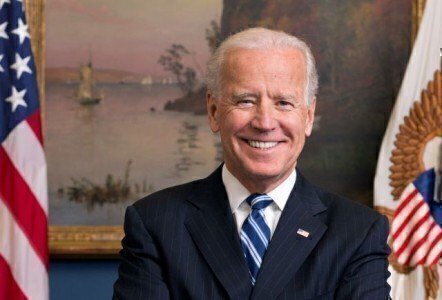With renewed talk of a possible Joe Biden run at the White House, Constitution Daily decided to look at the track record of sitting Vice Presidents in presidential elections. The results are certainly mixed.

There have been rumors that Biden, the current Vice President, could consider challenging Hillary Clinton, Bernie Sanders and others in the Democratic primary season.
A big “if” would be the prospects of Biden securing the nomination as a sitting Vice President, given Clinton’s lead in the polls and in fundraising. But if Biden were to become the Democratic nominee, it would be an unusual situation in the long-term history of presidential elections.
Starting in 1789, the United States has had 57 presidential elections. A sitting Vice President has won just four of those elections. In other cases, former Vice Presidents who became President after a death in the White House gained election, such as Theodore Roosevelt, Calvin Coolidge, Harry Truman and Lyndon Johnson.
But of the 114-plus major-party candidates in those 57 elections, only eight were sitting Vice Presidents, and two of the candidates were Founding Fathers in the pre-modern election era.
For example, in 1796, Vice President John Adams defeated Thomas Jefferson in the nation’s third presidential election. Four years later, Vice President Jefferson defeated Adams in a rematch.
Since the modern election era stated in 1804, only Martin Van Buren (in 1836) and George H.W. Bush (in 1988) were able to win the White House while campaigning as a sitting Vice President. In 1860, John C Breckinridge lost to Abraham Lincoln; in 1960, Richard Nixon lost to John F. Kennedy; in 1968, Hubert Humphrey lost to Nixon; and in 2000, Al Gore lost to George W. Bush.
Nixon is also the only former Vice President who won the presidency after failing to win the White House as a sitting or former Vice President. Henry Wallace and Walter Mondale also failed as former Vice Presidents trying to win a presidential election.
Part of the reason for a lack of candidates from the pool of Vice Presidents has been the definition of that very office. Traditionally, some Presidents thought that Vice Presidents should not be seen or even heard.
For example, Vice President Harry Truman had little contact with President Franklin D. Roosevelt. President Roosevelt’s fifth cousin, Theodore, was upset that his Vice President, Charles Fairbanks, want to run against William Howard Taft for the 1908 Republican nomination. And John Nance Garner, FDR’s first Vice President (of three) try to secure the 1940 nomination away from his own President.
Another factor is the predilection of voters to see a change in power after a President serves multiple terms in office. Breckinridge, Nixon, Humphrey and Gore all lost after their party had held the White House for two consecutive terms.
Van Buren and George H. W. Bush stand out for several reasons. Both were highly visible party leaders and public figures. Van Buren was a top political organizer in the nascent Democratic Party. Bush had run against Ronald Reagan before becoming his Vice President, and he was a frontrunner in the 1988 GOP primaries with Reagan’s support.
Whether Biden becomes the ninth sitting Vice President to secure a major party nomination remains to be seen. But at least he has been through two prior campaigns for the White House, prior to become Barack Obama’s Vice President.







